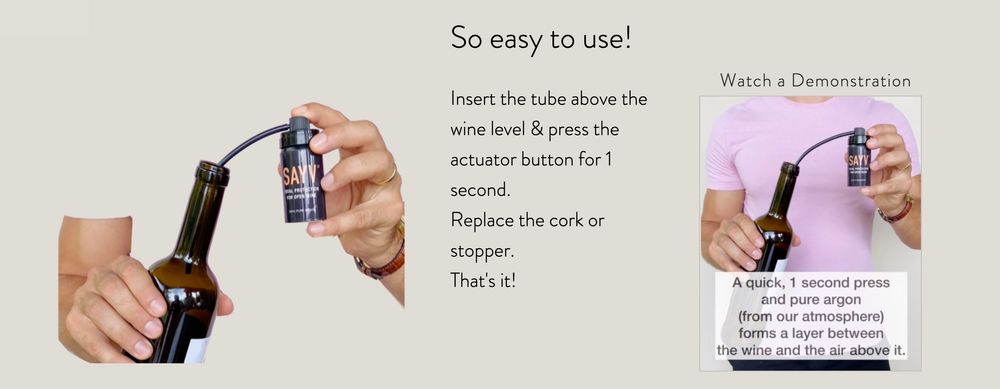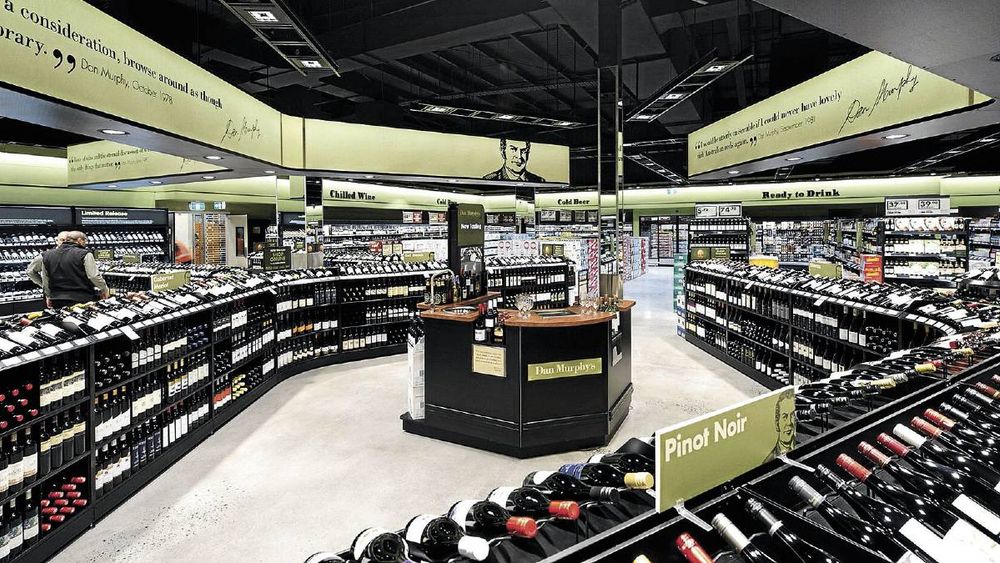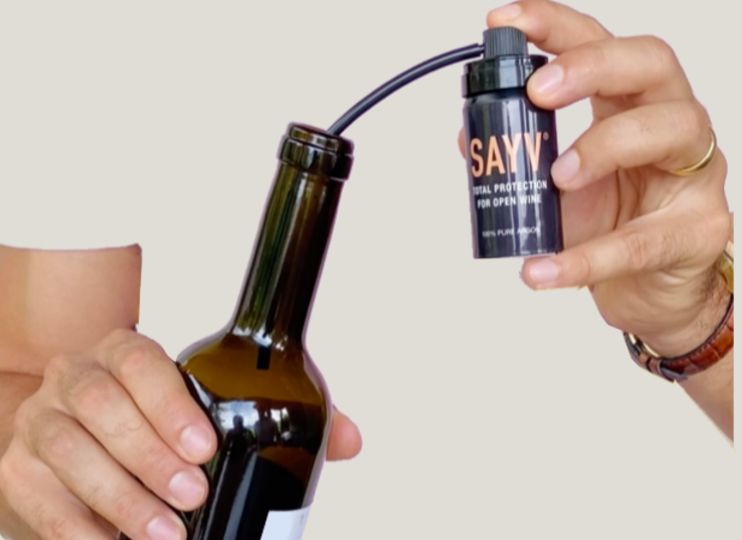A small burst of argon gas from a Sayv canister can help preserve opened wines in your restaurant, bar, shop or home, claims founder David Parrot.
In a nutshell what is Sayv all about?
Sayv is all about keeping open wine in the best possible condition to finish sometime later. To achieve this, Sayv delivers pure argon to wine consumers at the lowest price ever and in a volume that will meet most drinker’s needs for 1-2 months – all without requiring any special hardware.
This does sound rather familiar to other products on the market – what makes Sayv different?
There are, in fact, very few products on the market which deliver pure argon and they are all very costly. Without getting too technical, argon, which is an inert gas (meaning that it will not combine or interact with any other substance) is made up of just one atom. And since atoms are very small, they tend to escape easily from any standard container. Sayv employs proprietary technology that holds argon in a simple, disposable container, a feat only very recently made possible and one which contributes significantly to the low cost of the product.

The Sayv wine preservation system – all in a can
So you are looking to bring wine preservation to the masses rather than it being the preserve of fine wine?
Yes.Because of the technical challenges of packaging and delivering argon to the end-user, the cost has been unavoidably high, placing it out of reach for many. But although the fine wine consumer is more easily able to justify a high price for argon, there are many whose need is no less compelling but for whom the cost of argon has placed it out of reach.
There will be those in the wine trade who will raise their eyebrows that Sayv can do what it says and truly protect the wine. What evidence have you got to convince them?
The question about efficacy is probably better asked in the context of what evidence exists that argon truly protects wine rather than Sayv. Regardless of the packaging of the gas or the delivery method of it, argon is argon; there are no grades or varieties of it. So we should look at how and why argon does what we say it will do. Although there’s an abundance of anecdotal feedback from experts and wine critics, the science is highly compelling.
There are three vital considerations. Firstly, argon is inert and will not (indeed cannot) mix or blend with any other substance Secondly, argon, as already mentioned, comprises only one atom and contains neither oxygen nor anything else at all. Thirdly, argon is heavier than air. This means that even the thinnest layer on top of the wine in a bottle will separate it from the overlying air and thus stall the oxidising interaction.
Although the Sayv brand is new to market, its predecessor product, a much larger container of exactly the same argon gas, has been evaluated by many of the world’s most respected experts, all of whom were unequivocal in their assessment of the efficacy of argon. To name just a few, Jancis Robinson MW, Philippe Guigal and John Gilman (“View from the Cellar” in New. York) who summed it up with “…one simply has only to try it to become a true believer”.
You have launched in other countries – where and what impact has it had?

Dan Murphy, the Australian drinks chain, is stocking Stayv in its stores across the country
Sayv is being launched in Australia, the UK, Germany, US, Japan, Singapore, Philippines and Malaysia. Although it is really too soon to assess impact Australia’s dominant wine retailer, Woolworth Group’s Dan Murphy’s (a chain of 250 mega stores) is ranging it in every store throughout the country.
How are you looking to build distribution?
Our business model precludes sales to the end-user but instead we rely on importers and distributors to reach both channels. Given the size (sufficient to protect 15 bottles) and the recommended retail price of £4.99, we are pursuing a “low margin/high volume strategy” which we expect will attract a relatively high percentage of consumers.
What are your hopes in the UK in terms of distribution – where will you sell it ?
Our goal is to sell across a variety of channels. In addition to the traditional on and off trade wholesalers, we expect also to be picked up by the major supermarket chains as well as the indies, many of whom are currently awaiting the arrival of the first shipment. We believe that this product though unlikely to reach FMCG status, will nevertheless have a very wide appeal at both the trade and consumer level.
Do you hope it will be widely used by the wine industry itself in restaurants, wine distributors and by buyers and wine journalists?
Well, all of the above, hopefully. For those in the industry whose work involves tasting, serving or showing a wine, Sayv is a very easy andeconomical way to minimise an otherwise wasteful process and ensure a wine continues to show well even though the bottle may have been opened hours or days earlier. For by-the-glass programs, it is a godsend. No compromising and no wastage.

David Parrot came up with the idea frustrated at coming home to find wines had gone off whilst he was away
How are you going to promote it and prove its effectiveness to a sceptical trade?
We gladly make available samples to those who wish to try it for themselves. We will also be circulating user feedback via social media.
What is your background?
For most of my adult life I have been a commercial pilot, however, I have always been interested in “crossover technology”. Arising out of my private pilot training 50 years ago I became aware that the fan blade on a car engine was a particularly inefficient, wasteful and fuel thirsty device. I felt certain that the technology existed to perform its function much more effectively and this led to the invention of the electric fan controlled by thermal switching. This device is now standard on virtually all petrol and diesel cars. I took the same approach when working on the challenge of “bottling” argon.
Why did you want to change careers and look to create what is such a niche product?
Nearing the end of my commercial flying and after countless spoiled bottles of wine over several decades, I decided to focus on a practical way to prevent oxidation of open wine. Because of my chosen career, I very often had to limit my wine consumption to one or, at the most, two glasses of wine in the evening. Consequently, I came home a day or two later to the compromised remains of a previously opened bottle which then usually ended up in the sink. I had long thought about the issue and with my flying career coming to an end, the time seemed right.
How did you go about developing it?

Sayv hopes to be useful both in the trade and for wine consumers
It did not take very long to discover that our creator apparently had wine preservation in mind when a dash of argon gas was added to our atmosphere. Being inert and heavier than air, it was obviously the perfect solution. Argon is not particularly useful for anything else but at keeping wine in good condition, it excels. But it also didn’t take long to discover why I could not buy a small quantity of it in a simple container. It couldn’t be done. There was no known way to keep this gas made up of a single atom in a canister without it escaping in minutes.
This, then, became the challenge. It was a mechanical engineering issue. There could be no question as to the efficacy of argon in the role I intended for it, but a valve was needed to hold it in and then release it on demand from a canister. The solution was not found quickly nor easily, but ultimately it was accomplished with the considerable help of the inventor of the aerosol mechanism. And here we are.
What are your ambitions for Sayv going forward – how do you hope it can grow?
We’re expanding quite quickly now with new markets in both hemispheres and it’s our hope that Sayv will ultimately be seen as the essential accessory for enjoying wine without the restrictions we’ve been accustomed to for centuries. It has, we believe, a largely universal appeal.
Any other products in the pipeline?
We’re looking at other packaging and dispensing techniques but for the foreseeable future, Sayv in its present format will be our main focus.
- If you would like to find out more about Sayv then go to its website here.
- You can contact David Parrot on david@sayvwine.co.uk.










































